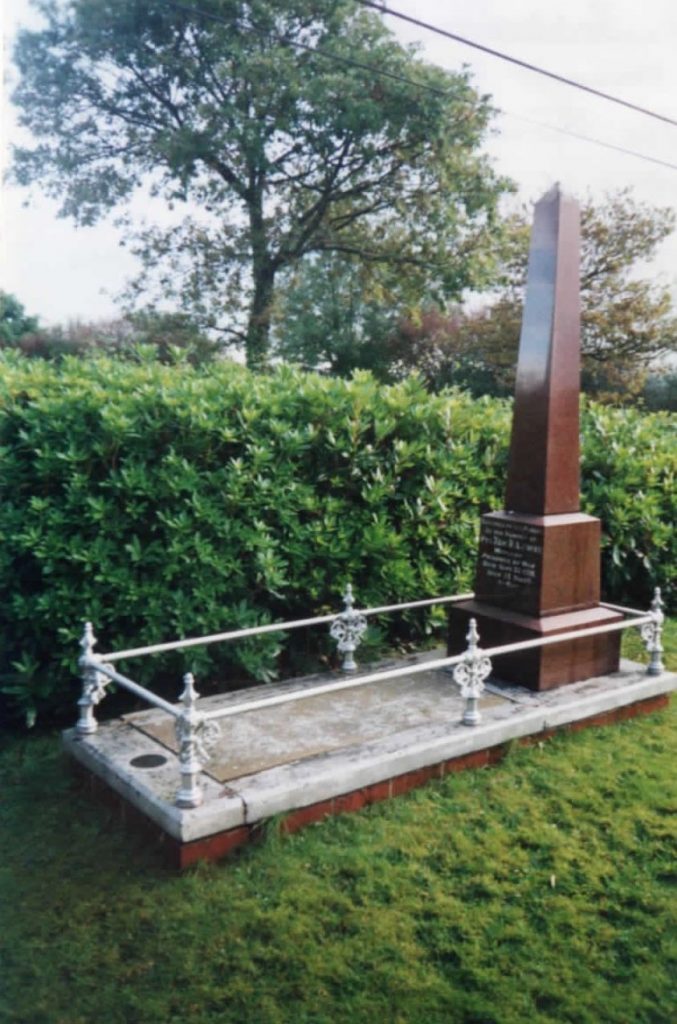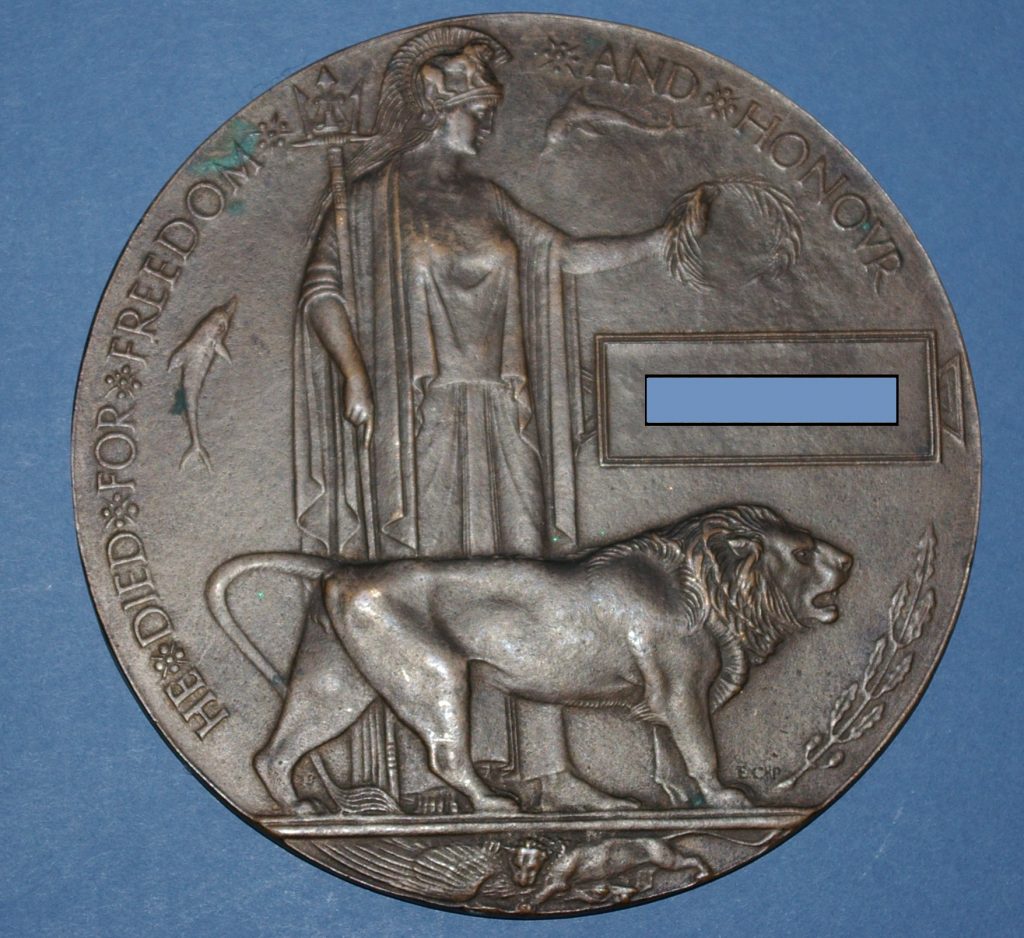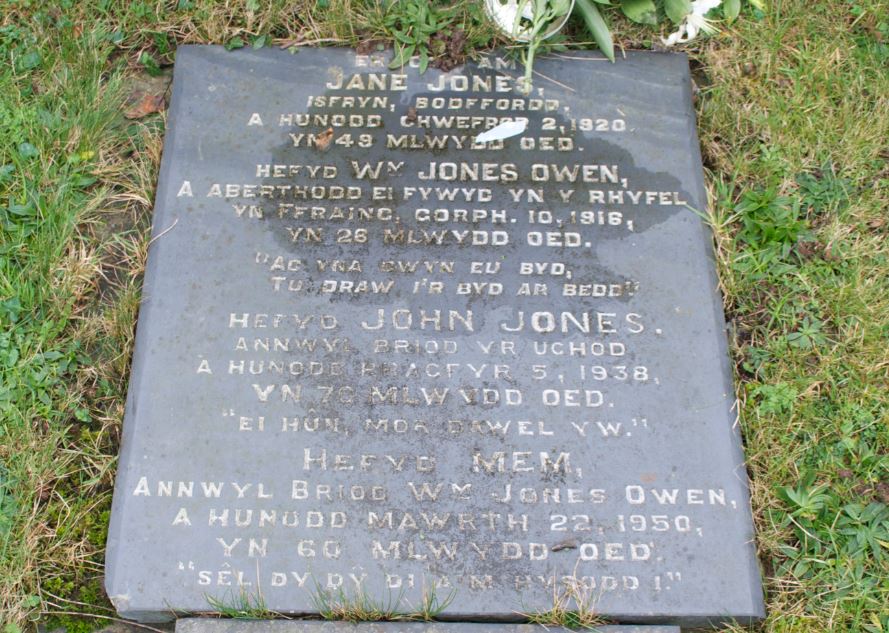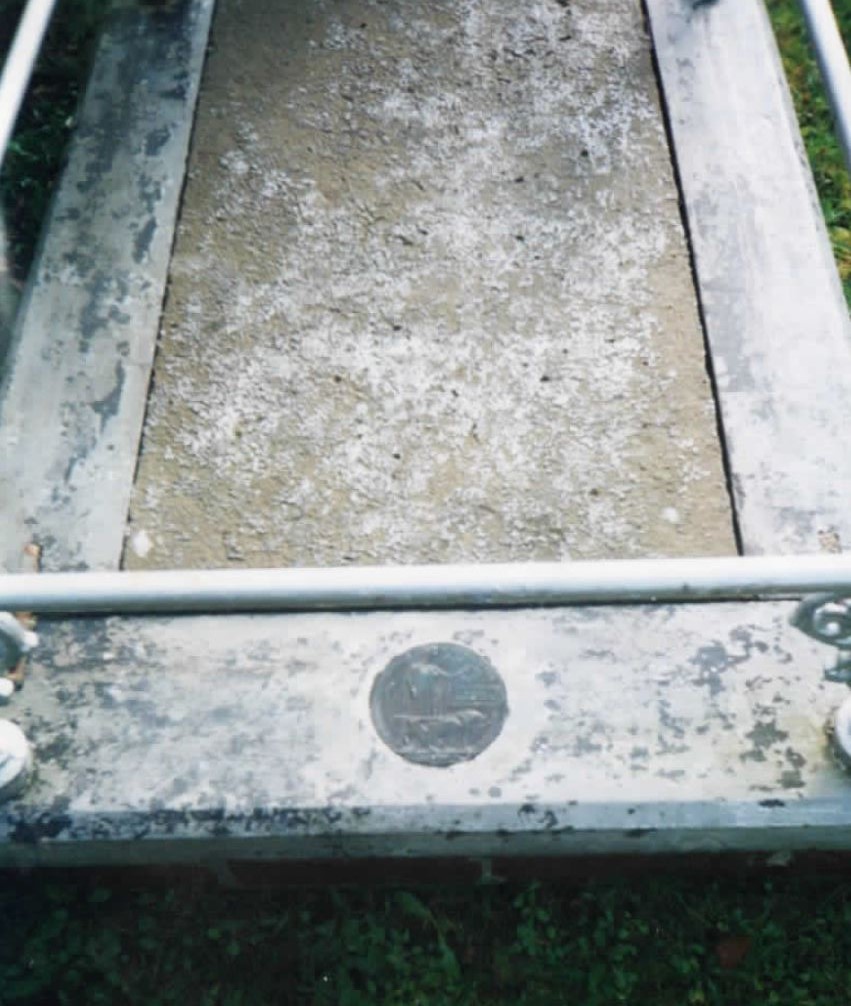The ‘Dead Man’s Penny’: A family’s tribute to a fallen son
At Boncath near Cardigan, two years following the end of hostilities in November 1918, a memorial obelisk was erected in the grounds of Vachendre Chapel in memory of Private Tom Lewis, who died on 27 September 1918 while a Prisoner of War. He was twenty-seven years old and was the son of Jonathan and Martha Lewis of Winllan, Boncath. He was also the only member of the chapel to perish in the Great War. Tom Lewis is not buried at Vachendre Chapel; to view his actual resting place you need to travel to the Department of the Nord in France, as this fallen soldier of Boncath is buried at Glageon Communal Extension Cemetery, near the village of Trelon, just a few kilometres from the Belgian border. At the time he was serving with the 1st Battalion East Yorkshire Regiment.
 The type of obelisk on display at Vachendre Chapel, in memory of Tom Lewis, is not particularly remarkable; such imagery or memorial type was frequently adopted for funerary purposes in the Victorian and Edwardian periods, and even today remains a common sight at cemeteries throughout west Wales and beyond. What is different, in this case, is the presence of a large coin embedded into the boundary footings of the memorial. This is in fact the memorial medallion issued to Tom Lewis’s family, and to all the families of fallen men and women following the Great War, from a grateful ‘King and Country’.
The type of obelisk on display at Vachendre Chapel, in memory of Tom Lewis, is not particularly remarkable; such imagery or memorial type was frequently adopted for funerary purposes in the Victorian and Edwardian periods, and even today remains a common sight at cemeteries throughout west Wales and beyond. What is different, in this case, is the presence of a large coin embedded into the boundary footings of the memorial. This is in fact the memorial medallion issued to Tom Lewis’s family, and to all the families of fallen men and women following the Great War, from a grateful ‘King and Country’.
The presence of this soldier’s memorial medallion is an unusual feature for a First World War memorial site. More popularly known as the ‘Dead Man’s Penny’ (some would suggest disparagingly), over a million of these bronze medallions were produced in the immediate post-war years.  The medallion measured 120mm in diameter and was designed by the sculptor Edward Carter Preston. The name of the fallen serviceman is given, but the rank of the individual is not, reflecting equality in death, if not in life. The figure of Brittania, complete with trident, dominates the allegory, together with the image of a lion, and two dolphins, the latter representing British sea power. At the base, another lion is seen devouring a German eagle. ‘He died for freedom and honour’ is inscribed around the edge (of course replaced by ‘she died …’ in the case of women service personnel who perished). Although at the time some viewed the medallion as a wholly inadequate form of recognition for those who had paid with their lives, it is clear that the family of Tom Lewis viewed it with great pride, giving it a prominent place at their son’s memorial site.
The medallion measured 120mm in diameter and was designed by the sculptor Edward Carter Preston. The name of the fallen serviceman is given, but the rank of the individual is not, reflecting equality in death, if not in life. The figure of Brittania, complete with trident, dominates the allegory, together with the image of a lion, and two dolphins, the latter representing British sea power. At the base, another lion is seen devouring a German eagle. ‘He died for freedom and honour’ is inscribed around the edge (of course replaced by ‘she died …’ in the case of women service personnel who perished). Although at the time some viewed the medallion as a wholly inadequate form of recognition for those who had paid with their lives, it is clear that the family of Tom Lewis viewed it with great pride, giving it a prominent place at their son’s memorial site.
As with the obelisk at Vachendre Chapel, many chapel, church, and war memorial sites, which held the names, if not the mortal remains of the fallen, were given prominence and significance by the families and close friends of the fallen. The names of servicemen, buried or lost abroad, remain a common feature on family gravestones throughout Britain. Here is an example from Anglesey: the grave of William Jones Owen, who died in the Battle of Mametz Wood (July 1916).
These sites acted as a form of surrogate grave for those who could not afford to make the trip out to France or Belgium, or whose loved ones had no known resting place, or who had perished at sea, or were laid to rest in more distant lands such as Mesopotamia, Palestine, Gallipoli, or Salonika. During the immediate post war years such sites were visited regularly by relatives and close friends; a constant reminder to those living in the immediate vicinity of the sacrifices made by the fallen, and indeed the suffering of those left behind. Today, most of these sites, and the tributes they hold, go unnoticed, but each is a material reminder of sacrifices made and heartache endured by those closest to the fallen.
The Vachendre obelisk is significant for one other reason. At the unveiling in October 1920, local veterans, who were there in force, marched from the village of Boncath to the chapel ground to witness the speeches that accompanied the unveiling. Two contrasting opinions on the war were evident in these addresses. Fortunately for the historian the speeches were reported in the Cardigan and Tivyside Advertiser, on 22 October 1920. The Reverend Esgar James of Cardigan put forward a distinctly anti-militarist theme in his address, stating, ‘they were not there to glorify militarism nor war, but to pay tribute to one who had laid down his life for them’. The unveiling itself was performed by Colonel Spence Colby who, in no uncertain terms, gave a different view of events, stating, ‘those miserable people who went up and down the country speaking against what they were pleased to call militarism, should leave the country, and show themselves to be what they really are – traitors to their country’. It is difficult to judge from this short newspaper report whether the Colonel was responding directly to Esgar James’s comments, or that he was targeting members of the Nonconformist community when referring to ‘those miserable people’, but his contrasting views, expressed with obvious animosity and vitriol, may be seen as indicative of tensions over the conduct of the war between some Nonconformist elements and those fully behind Britain’s part in the conflict, such as Colonel Spence Colby. The degree to which anti-war sentiments pervaded Welsh rural society throughout 1914-1918 and beyond remains a contentious issue among historians of the Great War in Wales, particularly around the part played by Nonconformist ministers in spreading anti-war rhetoric and pacifist beliefs. It is perhaps unwise to make general judgements about attitudes towards the war in this part of Wales based upon one newspaper report and one memorial unveiling, but this source can form part of a wider study of memorial unveiling speeches in the 1920s, many of which were covered, verbatim, in local newspapers. These points aside, the views of the Reverend James tend to fit the image of the radical, anti-war Nonconformist minister in Wales, put forward by some historians, and even expresses a general attitude that, some believe, was widespread in Britain during the post-war era – more cynical and certainly more disillusioned by the war and its consequences.
Dr Lester Mason, University of Wales Trinity St David
To get to the Vachendre Chapel site, travel on the A484 Tenby-to-Cardigan road, and a mile and half north of Crymych (after passing through the village of Blaenffos) take a right onto the B4332 for Cenarth/Newcastle Emlyn. At Boncath village take the right turn to Bwlch y Groes . One mile down this road on the right-hand side is the Chapel.
g.h.matthews October 24th, 2016
Posted In: Uncategorized
